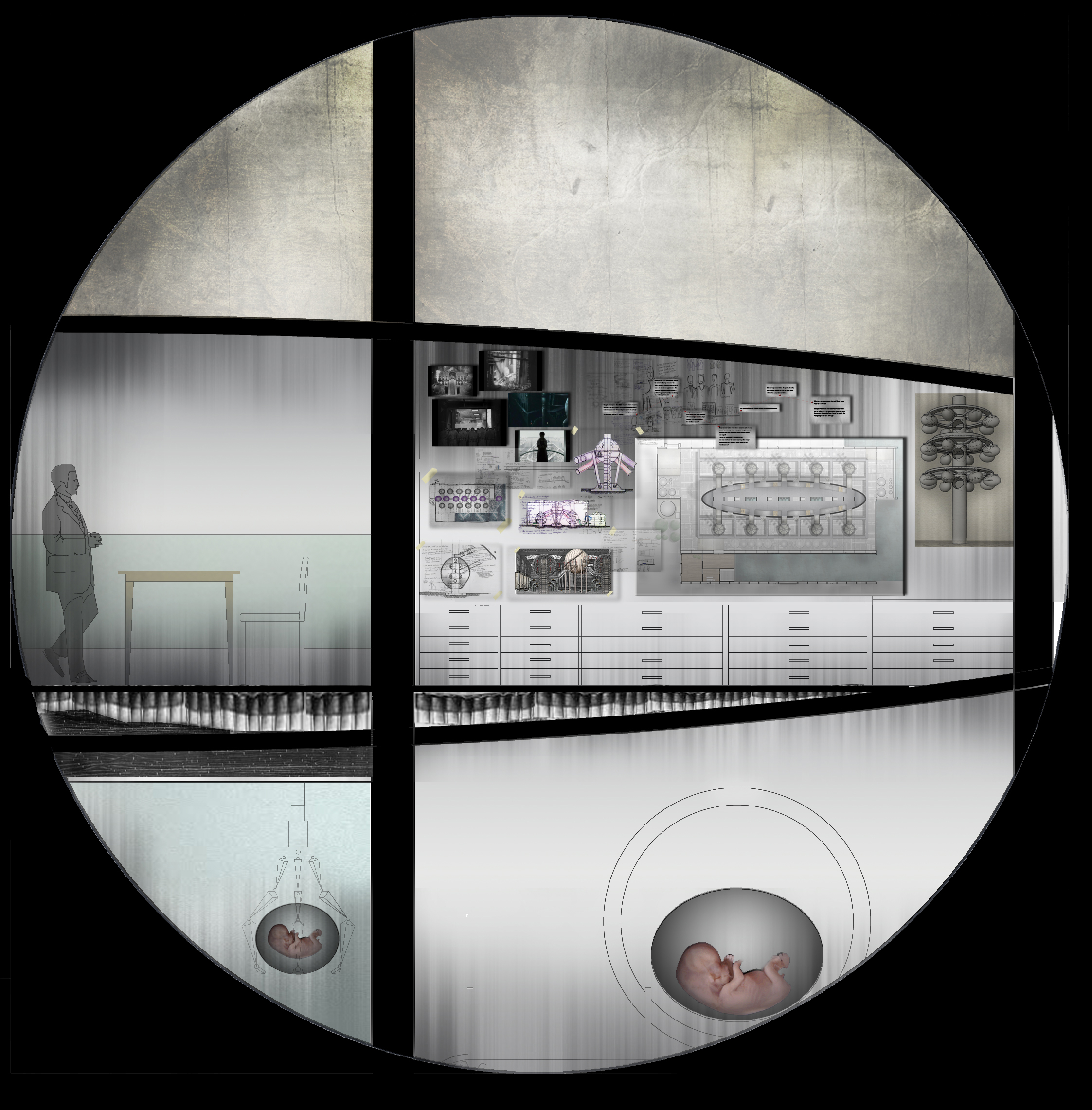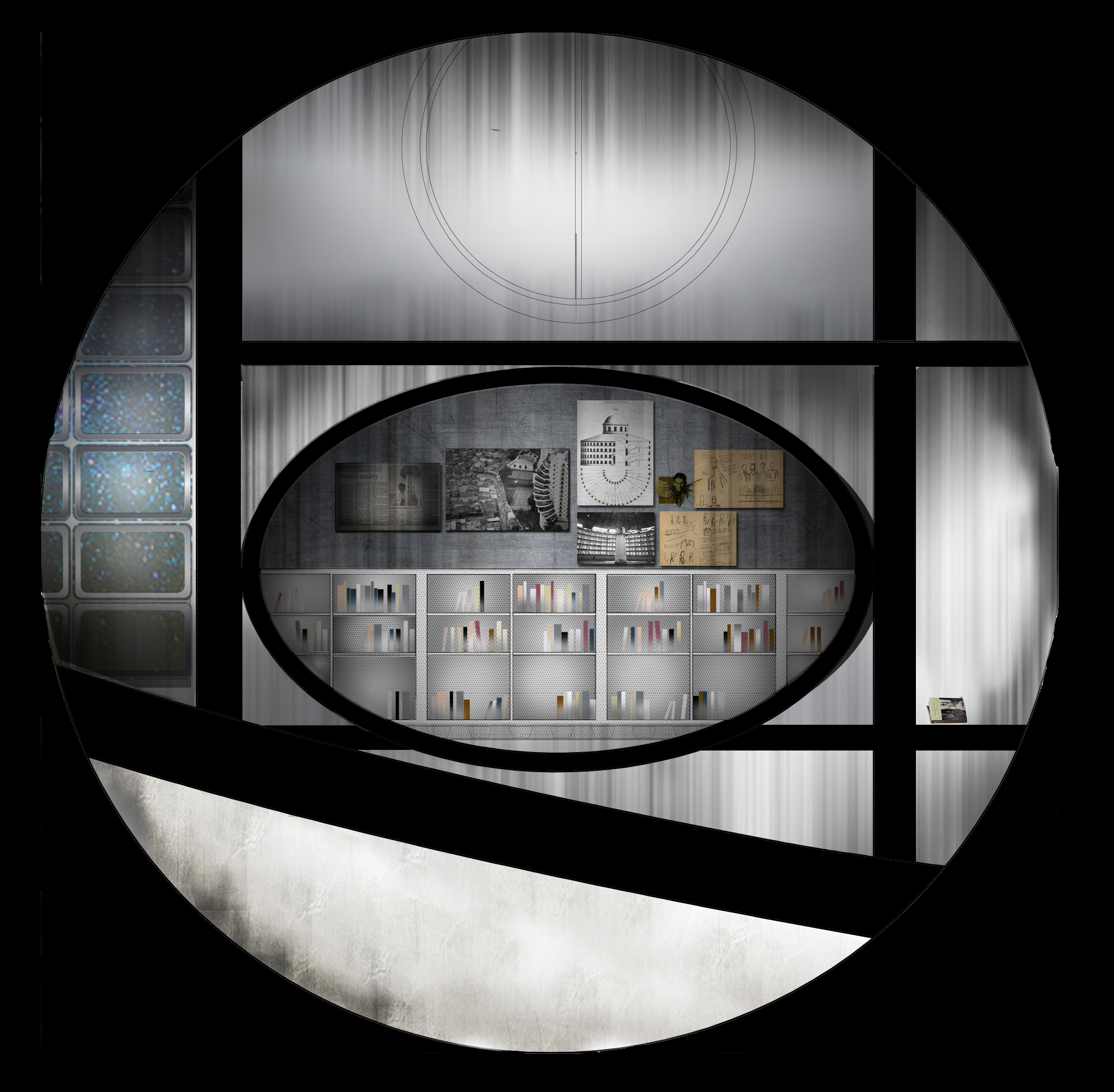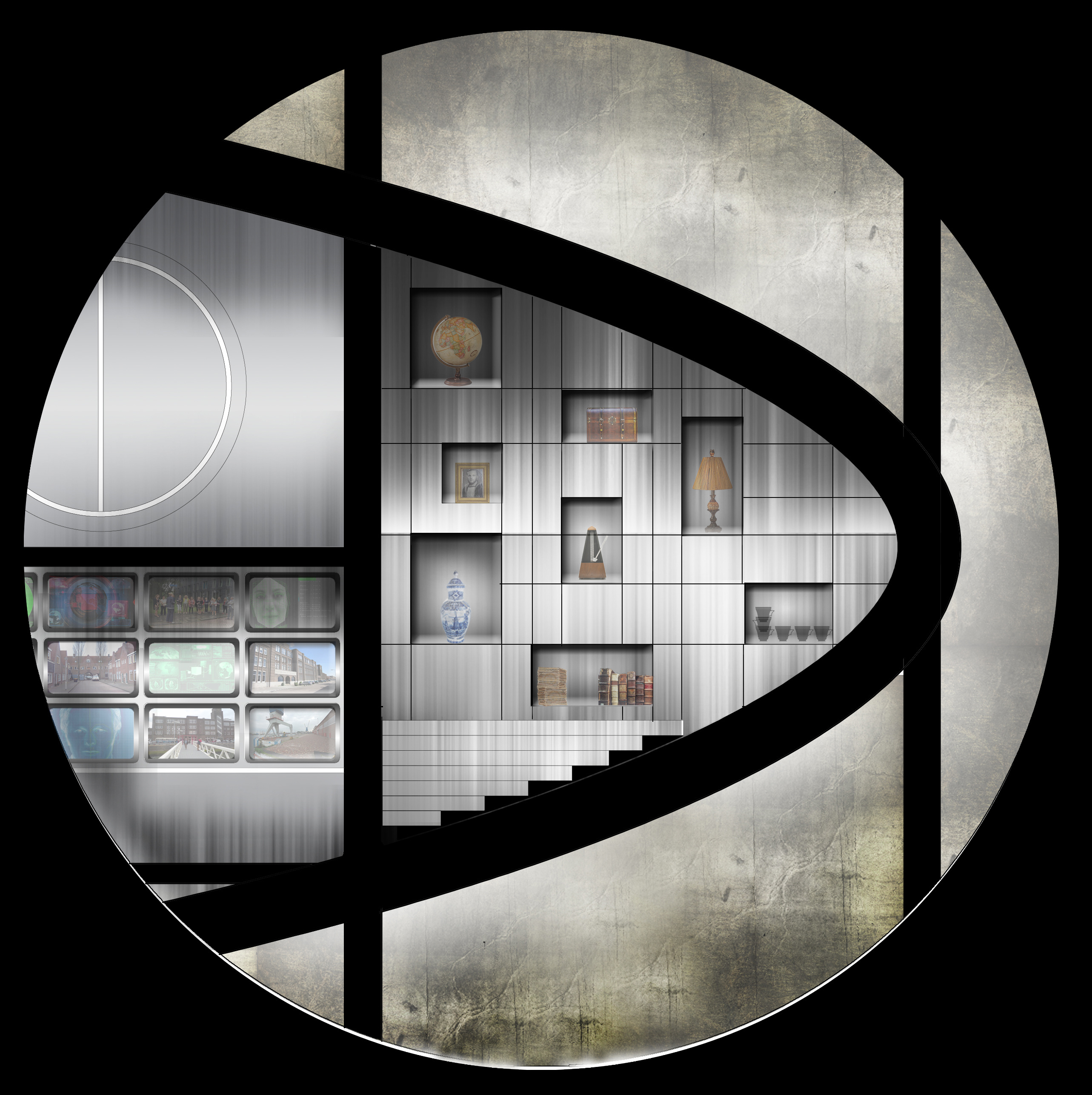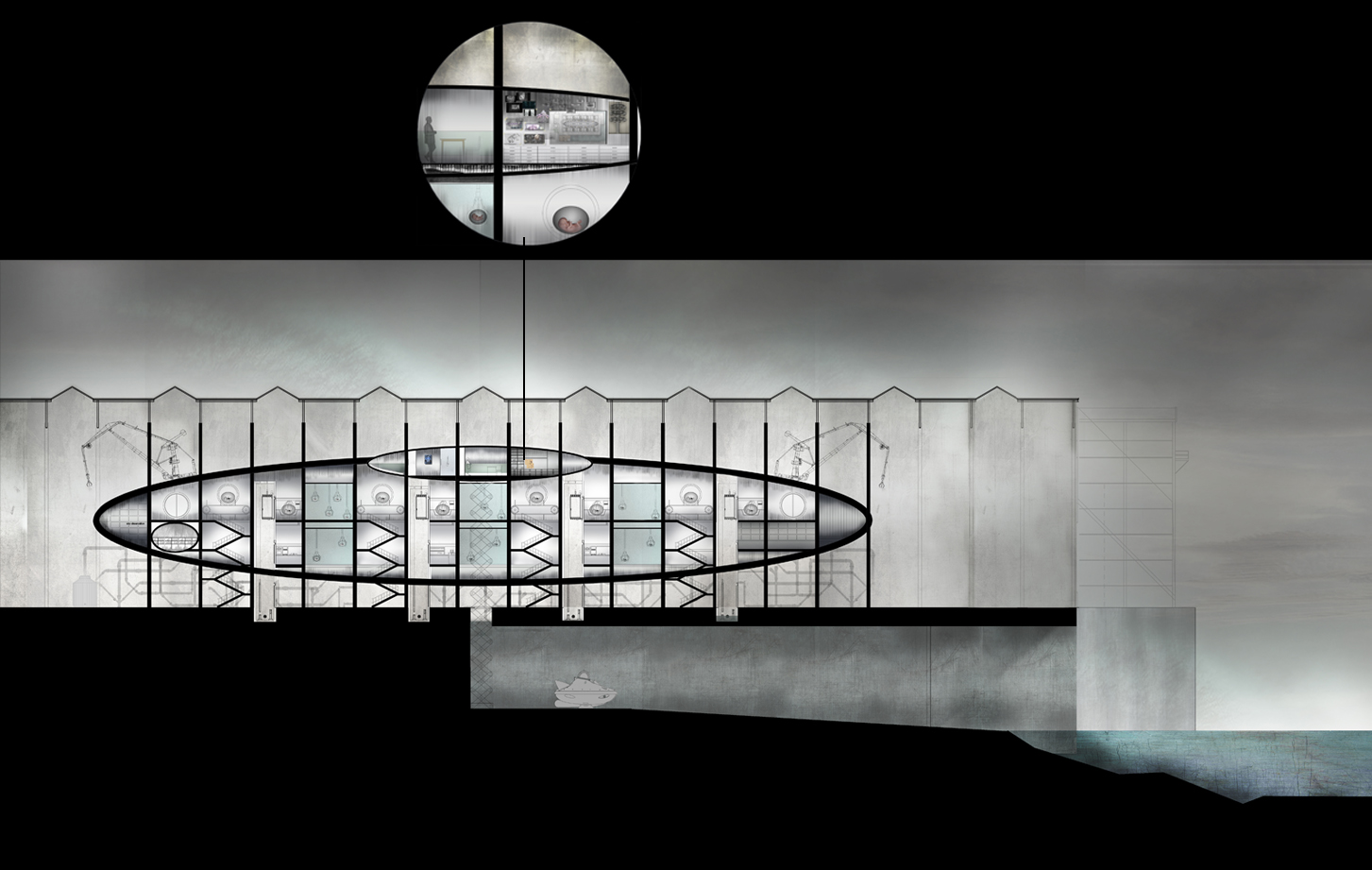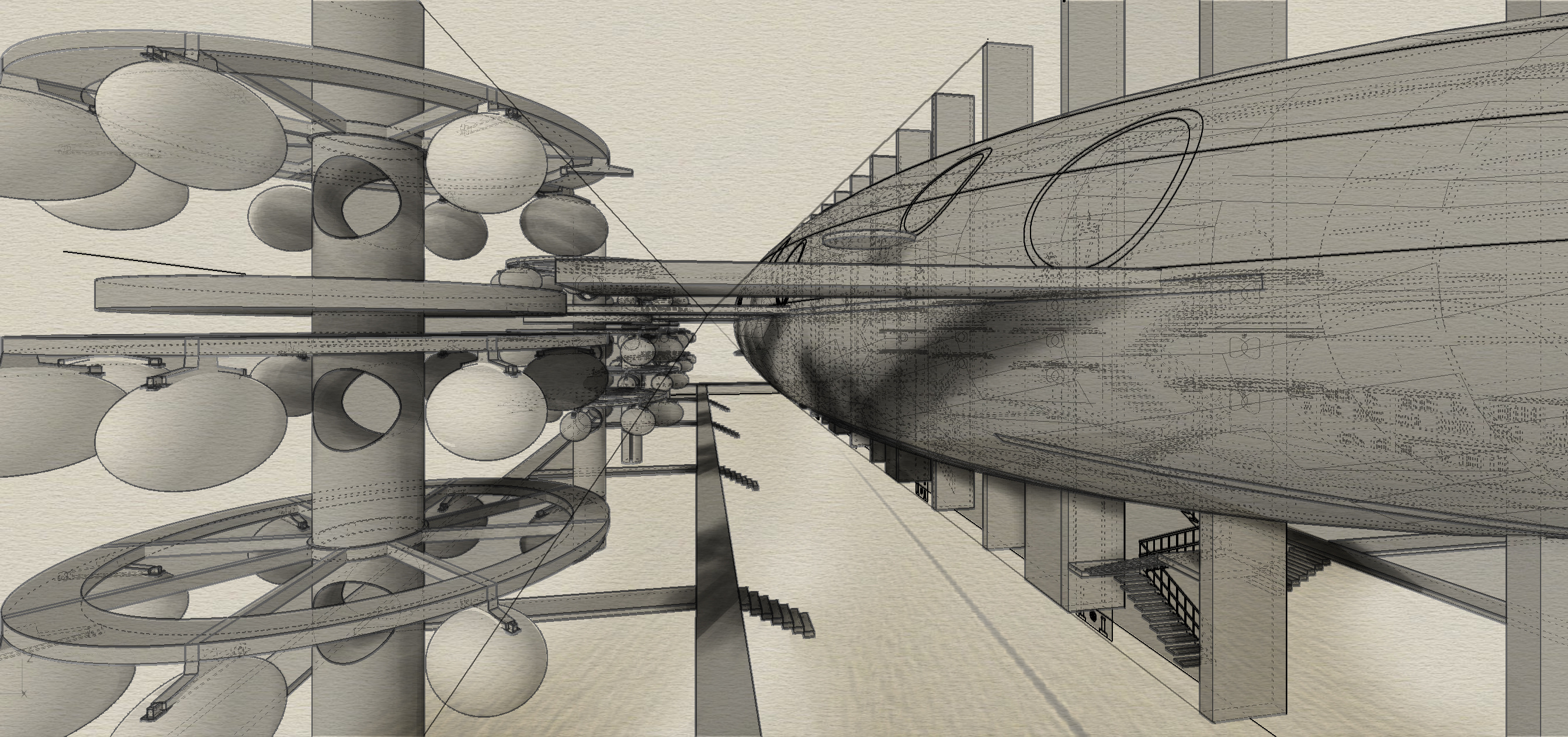The Incubator
The following work is a piece of science fiction. It is a projection taking place in the future of Heijplaat and comes as a social critique of the current state of affairs. It serves as a means to highlight the present situation of things.
This is the world of Nico.
Nico is a scientist from Heijplaat. He became the inventor of the incubator. The incubator of human beings. This was in result of the escalation of events between two main forces; the village and the port.
Historically, the village was formed due to the port which allocated an important submarine wharf at its edge. Only people working in the port were allowed to be part of the village. Whenever they were dismissed, they no longer belonged in the village. With the expansion of the port, and its transportation to another area of Rotterdam, these city-ports became in danger of extinction. Slowly, Heijplaaters started leaving the village because of the closing down of the submarine wharf.
In an effort to help the village, the port authority proposed several schemes striving to turn Heijplaat into a newly built village seductive to “new” people. The villagers thought differently. With the changes issued by the port authority and Rotterdam municipality, including building new housing structures, the population became more diverse and foreign to the authentic people of the village.
“Moreover, soon new blood. How does that all relate?Maybe the environment naturally selects who may or may not want to live here and that the bond will be used for the people in the village.” (People of Heijplaat)
Following this, the revolution took place. The villagers stood up against all the forces and decided to take matters into their own hands. This is where the story takes place. The villagers thus seek the help of Nico the scientist to create a factory/laboratory for the production of human beings. These humans will become model citizens of Heijplaat residing in it and working in the port. The wharf which was the reason of the formation of the village thus became the ultimate location for Nico’s laboratory.
There, Nico spent most of his time designing the factory within left out submarines that would later become his house and library. Slowly, the scientist,grew more aware of the dystopias of the world which led him to the understanding of the power that lay between his hands.
He moved into the wharf permanently and resided on top of his large laboratory allowing him to be in constant surveillance of his world.The Heijplaaters would give their DNA through a series of machines that are then carried to the lower level of the laboratory where the embryos are formed and hung for 9 months. After this, they are transported onto the aging cocoons surrounding the laboratory where they stay for 10 months before being given back to the villagers.Nico did this in full discretion. No one was allowed to enter his working space especially
Moreover, he implemented a chip within the embryo giving him full power to monitor them even after leaving his laboratory. Due to his increased isolation, Nico built several spaces casting him away from the village even more such as the sky observatory station, and the locked-up memory room where he stored all his belongings relating to Heijplaat. Nico remained in his submarine behind the walls of the wharf.
Meanwhile, the wish of the Heijplaaters was achieved. Nico and his laboratory became a part of their casual lives. The town was full of healthy youth and the port was their sole interest... The village was saved, but to what cost?
